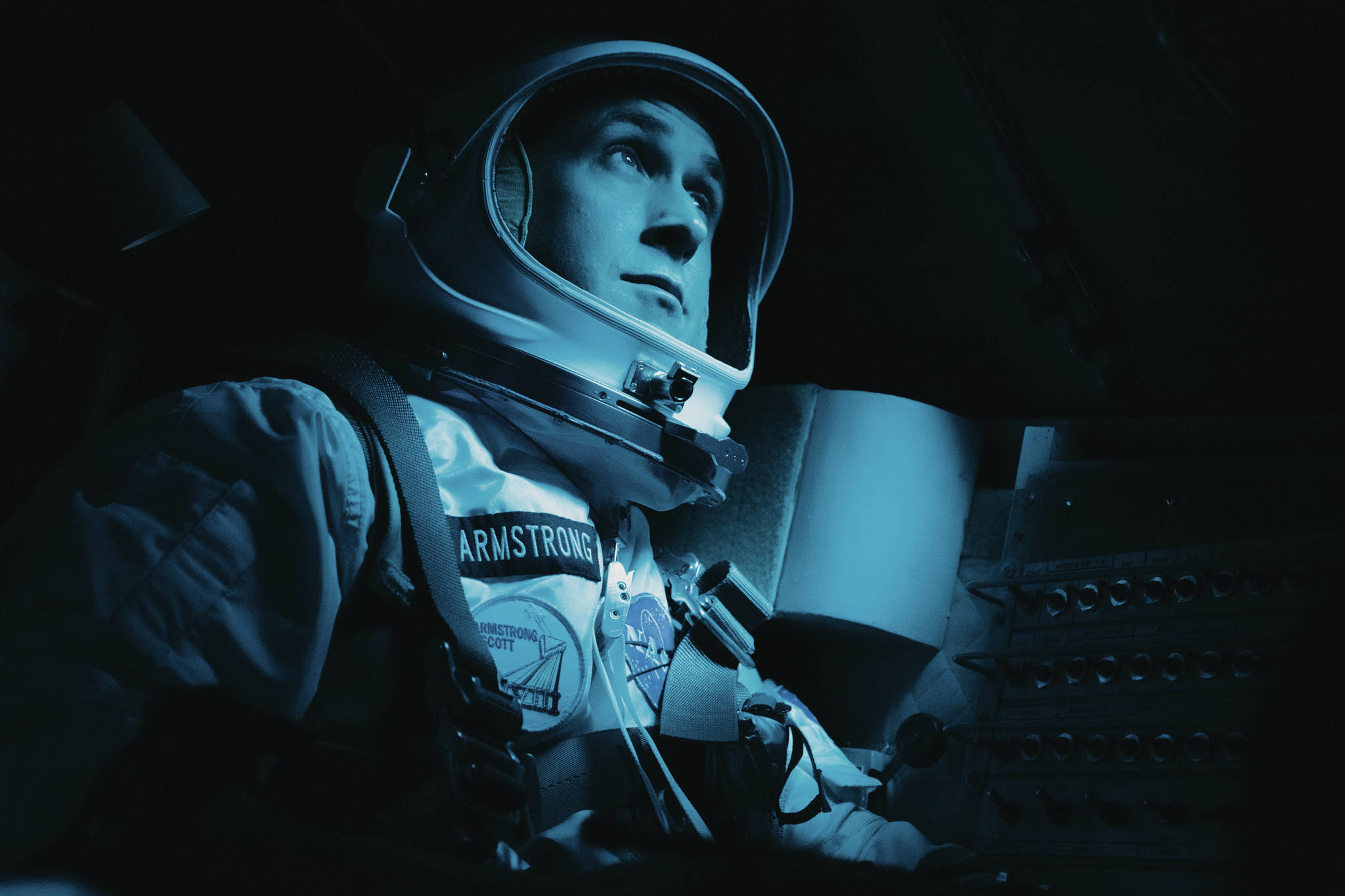Does space travel, including a stroll on the Moon, change a person? In First Man, the answer to this question is, resoundingly: Eh, not so much.
This is the story of Neil Armstrong, the first human to walk on the Moon. Director Damien Chazelle, who won an Oscar for La La Land, reunites with Ryan Gosling to paint a picture of an engineer/astronaut so composed and collected that he walks away from test-pilot crashes and domestic arguments with the same unruffled calm. Compare this to the raucous good times of Philip Kaufman’s The Right Stuff or the earnestness of Ron Howard’s Apollo 13, and you can see the originality of Chazelle’s approach to the space race.
In tracking Armstrong’s life from 1961 to 1969, Chazelle tries to capture some of the backyard-barbecue poetry of American life as well as the nitty-gritty details of astronaut training. The movie’s not so good with the poetry, but it’s gripping when it straps you into the space capsule. For three sequences—Armstrong’s first lift-off, his attempt to secure the catastrophically spinning Gemini 8, and the moon landing—Chazelle plays the action in something close to real time, as though to put the audience through the grueling, exhilarating, sometimes terrifying experience. The Gemini 8 sequence is nausea-inducing (I think I muttered the words, “We get the idea,” long before it was over), but the moon landing, buoyed by Justin Hurwitz’s cascading music, is completely enthralling—the touchdown was a closer shave than NASA let on at the time.
Back at home, the movie can feel, well, earthbound. Claire Foy (The Crown) brings intelligence and a bit of abrasiveness to the role of Armstrong’s wife Janet, but it’s hard for the movie to match the adventure of space with household chores. Chazelle seizes on the 1961 death of the Armstrongs’ daughter as a defining element of the story, and you can understand why (even if it feels a little dramatically forced): Without it, Neil Armstrong would be a robot. Gosling, his blue eyes seemingly forged from ice-cold stardust, gives a rather daring performance; in presenting an aloof and reserved Armstrong, he resists courting audience affection. Movie heroes are supposed to be sympathetic, so it’s admirable that Chazelle could include a scene like the one where Armstrong leaves a funeral wake to stand in his backyard alone—his friends are regularly dying in flight accidents—and then brushes off a friendly gesture from a fellow astronaut (Jason Clarke, as Ed White) by snapping, “You think I left the party because I wanted to talk to somebody?” This is a vivid portrait of an introvert.
First Man doesn’t try to cover all the NASA bases, and some astronauts flick past barely identified; Corey Stoll and Lukas Haas play Armstrong’s Apollo 11 crewmates Buzz Aldrin and Mike Collins, and Kyle Chandler is NASA honcho Deke Slayton. The film does not include everything that happened on the surface of the Moon—Apollo 11 was there for 21 hours, which would be a long movie even during awards season—so we don’t see the astronauts plant the U.S. flag, a note that caused some shamelessly phony political outrage a few weeks ago.
Even if First Man doesn’t fire on all cylinders, its unusual protagonist is fascinating in his blankness; here, the right stuff is downright cold-blooded. We’ve seen a lot of movie heroes with their heads in the stars, but they’re usually dreamers or artists. This may be the first time the dreamer’s head is filled with math equations and engineering diagrams—a movie hero for the techie age.
First Man
Opens Friday, October 12 | Rated PG-13






